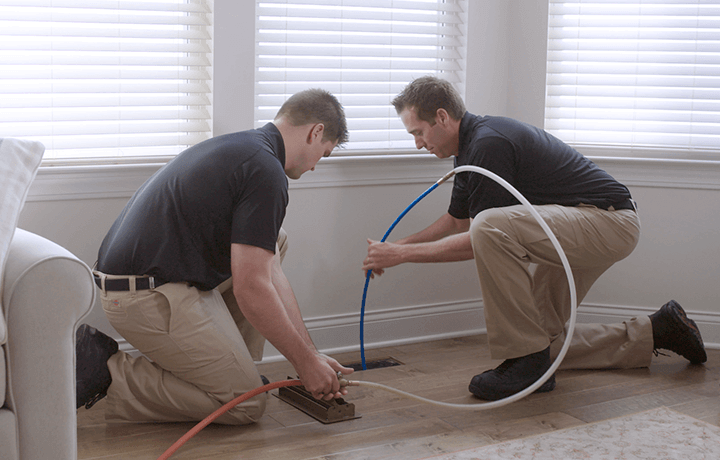When you begin considering modernizing your home or business, one key question often arises: how much does a central HVAC system cost? Whether you are a homeowner or business owner, knowing the price of installing or replacing a central HVAC system is crucial. In this comprehensive guide, we break down the costs, components, and factors influencing the price of central HVAC systems.

Understanding Central HVAC Systems
What is a Central HVAC System?
A central HVAC (Heating, Ventilation, and Air Conditioning) system is a network that provides heating and cooling to an entire building through a central location. It is designed to ensure even temperature distribution, humidity control, and indoor air quality improvement.
The Importance of a Central HVAC System
Having a reliable central HVAC system is essential for maintaining comfort and health in both residential and commercial spaces. It helps regulate indoor temperature, filter air pollutants, and maintain ideal humidity levels.
Factors That Influence the Cost
System Type
One of the critical factors determining the cost of a central HVAC system is the type of system you choose. Different systems come with varying price tags:
- Split System: A split system has separate components for heating and cooling. It’s typically more expensive than a packaged system.
- Packaged System: A packaged system combines both heating and cooling components in a single unit and is generally more affordable.
- Heat Pump: Heat pumps can both heat and cool a space, providing energy efficiency. Their cost is usually higher but can lead to long-term savings.
System Size and Capacity
The size and capacity of the HVAC system significantly impact the cost. Larger homes or commercial buildings require larger systems with higher capacities, increasing the overall price. A professional HVAC technician can perform a load calculation to determine the appropriate size.
Installation and Labor Costs
Installation costs vary based on several factors:
- Complexity of installation
- Labor rates in your region
- Modifications needed for ductwork
On average, installation labor can account for 50% of the total cost.
Efficiency and SEER Rating
Higher efficiency systems with better SEER (Seasonal Energy Efficiency Ratio) ratings tend to have higher upfront costs, but they provide energy savings over time. Choosing a high SEER-rated system can lead to long-term cost benefits.
Cost Breakdown by HVAC System Components
Furnace
The furnace is responsible for heating the air. It can be powered by electricity, gas, or oil. Prices vary based on the fuel type and efficiency rating. Gas furnaces, for example, generally cost between $1,200 and $5,000.
Air Conditioner
The air conditioner cools the air and removes humidity. The cost depends on the cooling capacity (measured in BTUs) and the brand. Prices typically range from $2,500 to $7,500.
Ductwork
Ductwork is the network of tubes that distribute conditioned air throughout the building. Adding or replacing ductwork can significantly increase the overall cost.
Additional Costs to Consider
Thermostats
Smart thermostats provide better control over your HVAC system, leading to potential energy savings. While they have a higher initial cost, they can result in long-term benefits.
Maintenance and Repairs
Regular maintenance and occasional repairs are necessary to keep your HVAC system running efficiently. Budgeting for annual maintenance contracts and unexpected repairs is essential.
Estimating the Total Cost
Residential Central HVAC System Costs
A new residential central HVAC system typically costs between $4,000 and $10,000. This estimate includes system components, installation, and initial maintenance. However, the final price can vary based on the factors discussed earlier.
Commercial Central HVAC System Costs
Commercial HVAC systems are generally larger and more complex, leading to higher costs. The average price ranges from $10,000 to $30,000 or more, depending on the building’s size and requirements.
Financing Your Central HVAC System
Payment Options
Financing options are available to make purchasing a central HVAC system more affordable. Homeowners and business owners can explore payment plans, home improvement loans, and manufacturer financing.
Government Rebates and Incentives
Government programs often offer rebates and incentives for installing energy-efficient HVAC systems. Research available programs in your area to reduce the overall cost.
Replacing vs. Repairing an Existing System
When to Replace
If your existing HVAC system is old, inefficient, or frequently requires costly repairs, it may be time to replace it with a new one. Age, performance, and repair frequency are important factors to consider.
When to Repair
Minor issues, such as a faulty component or minor ductwork damage, can often be resolved with repairs. Consulting an HVAC professional can help determine the best course of action.
DIY vs. Professional Installation
Pros and Cons of DIY
While some homeowners may consider DIY installation to save money, it can be risky and lead to costly mistakes. Proper installation is crucial for the system’s efficien cy and longevity.
cy and longevity.
Advantages of Professional Installation
Professional installation ensures that the system is correctly sized, installed, and configured. It also provides peace of mind, knowing that experienced technicians are handling the job.
FAQs
1. How long does a central HVAC system last?
A well-maintained central HVAC system can last between 15 and 20 years, depending on factors like usage, maintenance, and the quality of the components.
2. Can I install a central HVAC system myself?
While some components of an HVAC system can be installed by homeowners, it is highly recommended to hire a professional for the complete installation to ensure safety and efficiency.
3. What are the benefits of a high-efficiency HVAC system?
High-efficiency HVAC systems consume less energy, leading to lower utility bills and reduced environmental impact. They also provide better temperature control and improved indoor air quality.